It is rare that a ship is ever referred to as an architectural treasure, but I believe that the old Cayuga, which sailed from Toronto harbour each summer for many decades, perhaps qualifies for this distinction. Similar to a building, its required a designer and a myriad of craftsmen to complete its construction. The painting shown above depicts the vessel steaming through the Eastern Gap on a July morning as it commenced its voyage across Lake Ontario to Port Dalhousie.
Launched on 3 March 1906, the Cayuga’s maiden voyage was in 1907. It was named after one of the tribes of the Six Nations Confederacy. The SS Cayuga was capable of carrying nineteen hundred passengers. Twin screws propelled it, which were considered a marvel in their day. Most ships, including the Toronto Island ferries, employed side-paddles for propulsion, which generated far less speed.
During the sailing season, the ship was an integral part of the life of Toronto as it was the main method of journeying to the Niagara Region. Below its decks, it transported cars, trucks and cargo. During the closing weeks of summer and early autumn, the ship brought fruits and vegetables from the Niagara region to the markets of Toronto. Most Torontonians considered their summer incomplete if a voyage on the Cayuga were not included. During the years the ship was in service, it carried over 15 million passengers across the lake. Perhaps the most famous of them was the Prince of Wales, later to become King Edward VIII, who crossed from Toronto to Queenston in 1927.
The ship sailed from the wharf at the foot of York Street. Tickets for the SS Cayuga were purchased from the office of Canadian National Steamers. In the 1940s, fares were one dollar for adults and fifty cents for children, the war taxes being extra. The ship departed at 9:15 a.m. for a two-hour crossing to Port Dalhousie. The crowds brought along bicycles, picnic baskets, and sometimes yapping dogs. The ship’s polished oak rails and gleaming decks were a sight to behold. When the ship sailed out of harbour, it dwarfed any Toronto Island ferry that it passed.
On the outside decks were long, rows of wooden benches to accommodate passengers. On the out-going voyage, the best seats were on the port side, where the early-morning sun dispelled the chill in the air, and later, when the day warmed, the overhanging the deck above protected passengers from the heat. The port side also provided a panoramic view of the city’s skyline as the ship sailed across the Toronto harbour toward the eastern gap. In the 1940s, the massive Royal York Hotel, the towering Bank of Commerce, and the clock tower of the Old City Hall at the top of Bay Street, and the spire of St. James Cathedral, all reached high into the summer sky, no other buildings able to rival their soaring heights.
After sailing through the eastern gap, the ship entered the open waters of Lake Ontario and the captain set a southwest course. In the lounge inside the ship, there were more wooden benches. The ship also boasted a dining room and a dance floor that rivalled those of the finest hotels in Toronto. At the stern section of the lounge was a snack bar, where the crew sold coffee, tea, soda pop, and hot dogs. A sign indicated that the Cayuga was a “dry ship,” as wine, beer, and alcoholic drinks were not available. However, there were always a few men with bulges in their back pockets , not caused by overly thick wallets. Some passengers frowned upon the behaviour of these unsavoury characters, certain that they were carrying hip flasks. The ship was not as “dry” as the sign in the lounge indicated.
A grand staircase led from the lounge to the deck below. Halfway down there was a landing where the staircase divided, one side extending to the left and the other to the right. At the bottom, on the left, passenger walking toward the stern could peer through an open door that looked down into the engine room. They were able to watch the throbbing monster engines that powered the ship. Heat, steam, noise, and the odour of diesel oil were infused into the air. It was an awesome sight. Originally, the ship had been powered by coal, but it was eventually converted to oil.
The “Gents” room was another sight that was impressive, especially to younger boys. White basins sparkled in the morning light that shone through the portholes, which possessed gleaming brass fittings. The huge, ivory-white urinals were so deep that many a young lad felt in danger of falling in, and that if someone pulled on the brass handle, they might be flushed into the lake. The urinals were the equal of those in the basement of the Eaton’s store. Some lads wondered why such massive structures were necessary, thinking that they might be more suitable for a horse with a kidney problem.
If the weather cooperated, there was nothing so glorious as leaning on a rail of the Cayuga’s deck, gazing out over the water. If it were a sunny summer day, the sight was amazing—smooth waters and azure skies, with distant puffs of clouds hovering near the horizon. On such days, the lake resembled an enormous pond, the dazzling sunlight reflecting from its glassy surface. Within a half hour of the ship’s departure, the heat of the sun forced those who had earlier stood at the rails, to retreat to the recessed areas under the shade of the decks. There, they were able to sit in comfort and enjoy the view.
When the ship finally arrived at Port Dalhousie, the crew tossed the thick hawser ropes to the men on the dock, who attached them to the bollards. In warm weather, the ship was greeted by young boys who had gathered at the dock to watch the ship arrive. After they had moored the vessel to the wharf, they dived into the water to retrieve coins thrown by the passengers. This ritual occurred again when the ship embarked on its return voyage to Toronto.
Sadly, the mighty Cayuga was unable to attract sufficient passengers after people acquired automobiles and were able to motor to the Niagara Region, rather than sail across the lake. It went to the scrapyard in 1960. However, when built, it was an engineering marvel, in its way a rival to the grand buildings that were erected in the same decade in which it was launched. I believe that it qualifies as one of Toronto’s lost architectural gems.
The above information is from the book, “Arse Over Teakettle,” a novel about a boy coming of age during the Second World War. For a link to this book:
https://tayloronhistory.com/arse-over-teakettle/
People onboard the Cayuga to sail across the lake to Port Dalhousie in the 1940s. On evening dance cruises, the ship featured well-known orchestra, such as the Harry Bedlington’s Orchestra. Between sets, recorded music played the latest recording hits of entertainers such as the Andrew Sisters, Woody Herman, Cab Calloway, and Ellis McLintock.
The Cayuga in Toronto harbour, returning from a voyage from Niagara. The Royal York Hotel dominates the skyline. The roof of the Great Hall in Union Station is also visible. Photo is from the City of Toronto Archives.
A postcard from the collection of the Niagara Historical Society Museum in Niagara-on-the-Lake. The ship is entering the Niagara River, the American shoreline in the background. The words written across the card by the sender are indeed appropriate.
This postcard, also from the collection of the Niagara Historical Society Museum, depicts the Cayuga departing from Queenston. It is sailing northward toward the mouth of the Niagara River. In the background is the town of Queenston, and on the hill, in the top left corner of the photo, is the Brock Monument.
Another postcard from the same collection noted above. It shows the Cayuga at the dock at Niagara-on-the-Lake. Today, this area is included within Queen’s Royal Park. In the photo, troops have disembarked from the ship to proceed toward the military camp located on the north side of the town. In the background is Old Fort Niagara, on the American side of the river.
This postcard, from the Niagara Historical Society Museum, shows the military camp in 1907. Most of the site of the camp remains today as open space. The expansive field located beside the Shaw Festival’s Festival Theatre, was at one time a part of this campground.
The Cayuga at the wharf at Niagara-on-the-Lake, cargo ready to be loaded. This card is from the collection of the Niagara Historical Society Museum.
To view the Home Page for this blog: https://tayloronhistory.com/
To view previous blogs about movie houses of Toronto—historic and modern
Recent publication entitled “Toronto’s Theatres and the Golden Age of the Silver Screen,” by the author of this blog. The publication explores 50 of Toronto’s old theatres and contains over 80 archival photographs of the facades, marquees and interiors of the theatres. It relates anecdotes and stories of the author and others who experienced these grand old movie houses.
To place an order for this book:
Book also available in Chapter/Indigo, the Bell Lightbox Book Store and by phoning University of Toronto, Press Distribution: 416-667-7791
Theatres Included in the Book:
Chapter One – The Early Years—Nickelodeons and the First Theatres in Toronto
Theatorium (Red Mill) Theatre—Toronto’s First Movie Experience and First Permanent Movie Theatre, Auditorium (Avenue, PIckford), Colonial Theatre (the Bay), the Photodome, Revue Theatre, Picture Palace (Royal George), Big Nickel (National, Rio), Madison Theatre (Midtown, Capri, Eden, Bloor Cinema, Bloor Street Hot Docs), Theatre Without a Name (Pastime, Prince Edward, Fox)
Chapter Two – The Great Movie Palaces – The End of the Nickelodeons
Loew’s Yonge Street (Elgin/Winter Garden), Shea’s Hippodrome, The Allen (Tivoli), Pantages (Imperial, Imperial Six, Ed Mirvish), Loew’s Uptown
Chapter Three – Smaller Theatres in the pre-1920s and 1920s
Oakwood, Broadway, Carlton on Parliament Street, Victory on Yonge Street (Embassy, Astor, Showcase, Federal, New Yorker, Panasonic), Allan’s Danforth (Century, Titania, Music Hall), Parkdale, Alhambra (Baronet, Eve), St. Clair, Standard (Strand, Victory, Golden Harvest), Palace, Bedford (Park), Hudson (Mount Pleasant), Belsize (Crest, Regent), Runnymede
Chapter Four – Theatres During the 1930s, the Great Depression
Grant ,Hollywood, Oriole (Cinema, International Cinema), Eglinton, Casino, Radio City, Paramount, Scarboro, Paradise (Eve’s Paradise), State (Bloordale), Colony, Bellevue (Lux, Elektra, Lido), Kingsway, Pylon (Royal, Golden Princess), Metro
Chapter Five – Theatres in the 1940s – The Second World War and the Post-War Years
University, Odeon Fairlawn, Vaughan, Odeon Danforth, Glendale, Odeon Hyland, Nortown, Willow, Downtown, Odeon Carlton, Donlands, Biltmore, Odeon Humber, Town Cinema
Chapter Six – The 1950s Theatres
Savoy (Coronet), Westwood
Chapter Seven – Cineplex and Multi-screen Complexes
Cineplex Eaton Centre, Cineplex Odeon Varsity, Scotiabank Cineplex, Dundas Square Cineplex, The Bell Lightbox (TIFF)
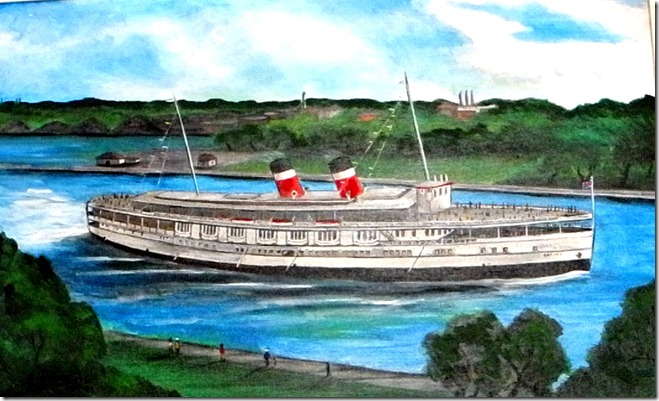
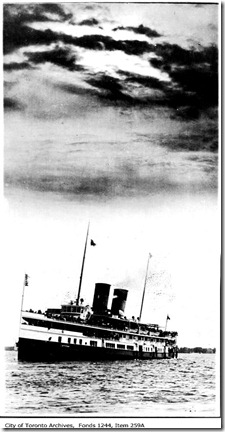
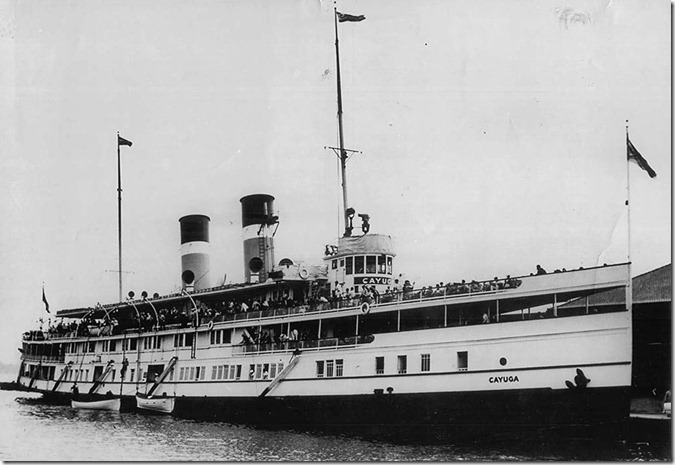
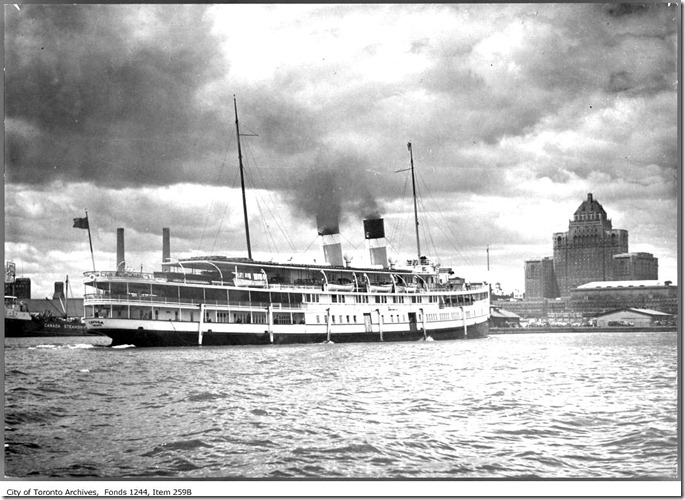
![NHSM079164f[1] NHSM079164f[1]](https://tayloronhistory.com/wp-content/uploads/2013/04/nhsm079164f1_thumb.jpg)
![NHSM080222f[1] NHSM080222f[1]](https://tayloronhistory.com/wp-content/uploads/2013/04/nhsm080222f1_thumb.jpg)
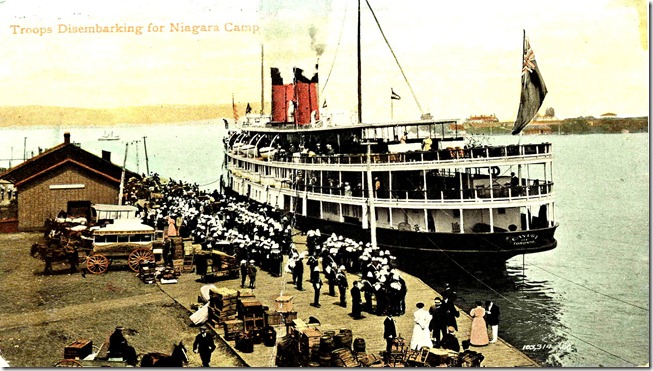
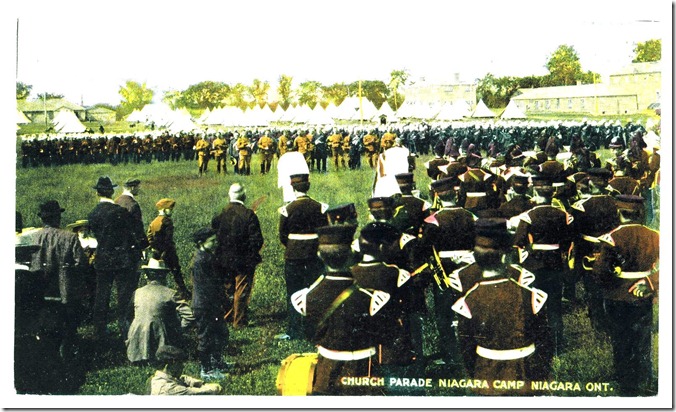
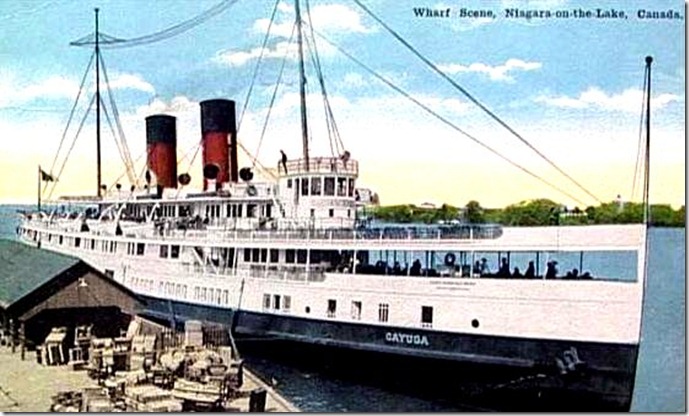
![cid_E474E4F9-11FC-42C9-AAAD-1B66D852[2] cid_E474E4F9-11FC-42C9-AAAD-1B66D852[2]](https://tayloronhistory.com/wp-content/uploads/2015/01/cid_e474e4f9-11fc-42c9-aaad-1b66d8522_thumb1.jpg)


My experience (first trip around 1938) with the Cayuga was always from Toronto to Niagara-on-the-Lake. For picnicking on the Queenston Heights near the Brock’s monument. As to Port Dalhousie, it was served by both the Northumberland and the Dalhousie City. Must try to dig up some old family photos! As I recall, the Northumberland was built on the Tyneside (and thus its name) and crossed the Atlantic under steam.
When the Cayuga was landing at the Niagara on the lake dock, the people on deck would
throw coins into the water as the ship neared the dock. The local boys would dive in the water
to grab a coin between the ship and the dock. I was not yet a strong enough swimmer
to try this, but was tempted. Today it would be in total violation of safety standards.
The water was clearer then.